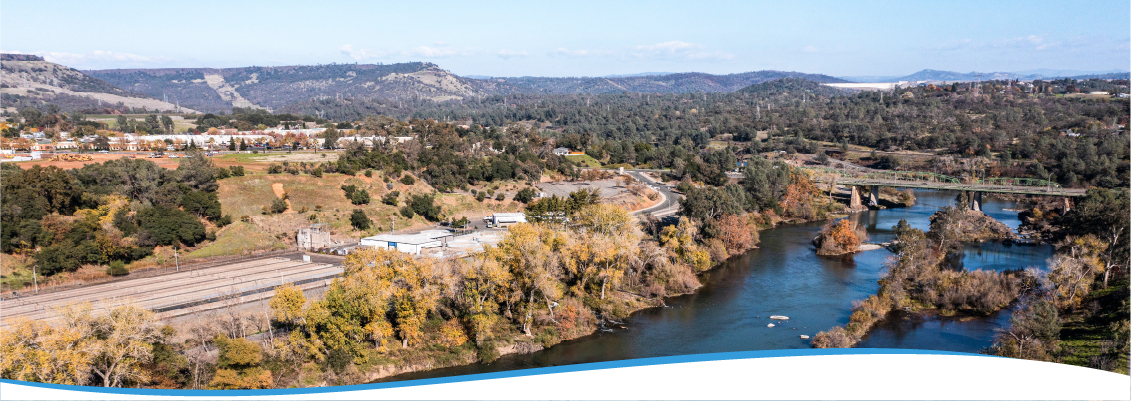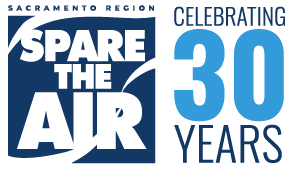






What is the Spare The Air program?
The Spare The Air program is dedicated to measurably improving the Sacramento Federal Nonattainment Area’s air quality and helping residents protect themselves from air pollution by discouraging the use of gas-powered vehicles and equipment, providing air quality forecasts, real-time readings, air pollution alerts, and educational materials for schools, businesses, residents, and community organizations. This public health education effort is a partnership between five regional air districts: the Sacramento Metropolitan Air Quality Management District, the Placer County Air Pollution Control District, the El Dorado County Air Quality Management District, the Feather River Air Quality Management District, and the Yolo-Solano Air Quality Management District.
What is the best way to help Spare The Air?
In short, use your gas-powered vehicle less. Carpooling, riding transit, teleworking, bicycling, walking, and driving a zero-emission vehicle are all excellent ways to reduce your emissions.
What is the main cause of smog in the Sacramento Region?
Gas-powered vehicles and other mobile sources, including trucks, locomotives, buses, motorcycles, agricultural equipment, and construction equipment contribute more than 70% of the emissions that produce smog.
When is a Spare The Air alert issued?
A Spare The Air alert is issued during peak ozone months, May 1 – October 31, when ground-level ozone (smog) is forecast to meet or exceed 126 on the Air Quality Index.
What groups are more at-risk for health impacts from air pollution?
Sensitive populations to air pollution include:
- Children under age 14
- Adults ages 65+
- Pregnant women
- Outdoor workers
- Athletes who train vigorously outdoors
- People with pulmonary or respiratory diseases, including congestive heart failure and asthma
What are the health effects of air pollution?
Exposure to air pollution can affect everyone’s health. When we breathe in air pollutants, they can enter our bloodstream and cause health complications, from coughing or itchy eyes to more serious conditions such as pulmonary disorders like asthma or lung cancer. Your risk of adverse health effects is unique to your health conditions, the air pollutant type and concentration, and the length of exposure.
Short-term effects:
- Increased fatigue
- Reduced resistance to infections
- Wheezing, chest pain, dry throat, headache, or nausea
- Weakened athletic performance
- Lung damage, even after symptoms disappear
- Added stress to the heart and lungs
Long-term smoke exposure can cause:
- Accelerated aging of the lungs
- Loss of lung capacity and decreased lung function
- Aggravated respiratory diseases such as asthma, bronchitis, emphysema, and possibly cancer
- Shortened life span
What is the Air Quality Index (AQI)?
The Air Quality Index (AQI) is a measurement that helps us understand air pollution levels, and how they may impact the natural environment and human health. The higher the AQI, the greater the level of air pollution. The AQI provides an easy way to determine whether you should enjoy the outdoors as usual or should consider planning an indoor activity to reduce exposure to elevated levels of polluted air. The AQI includes six AQI categories and when forecasted conditions are expected to reach 126 or higher for ground-level ozone, a Spare The Air alert is issued.
What is the difference between SpareTheAir.com and SpareTheAir.org?
SpareTheAir.com is the website for the Sacramento region’s program while SpareTheAir.org is the website for the Bay Area Air Quality District’s program. Both programs aim to reduce overall air pollution but have different localized resources and AQI thresholds for Spare The Air alert days.
What is the difference between the air quality forecast and current conditions?
The air quality forecast predicts the highest level of ground-level ozone expected for that day in the region or county, while the current conditions measure the levels of ground-level ozone at one point in time in the region or county. When the forecast is expected to reach 126 or higher for ground-level ozone, a Spare The Air alert is called to help reduce air pollution. On Spare The Air days the highest measurement of ground-level ozone typically occurs later in the afternoon, so current conditions may be lower than the forecast earlier in the day.


